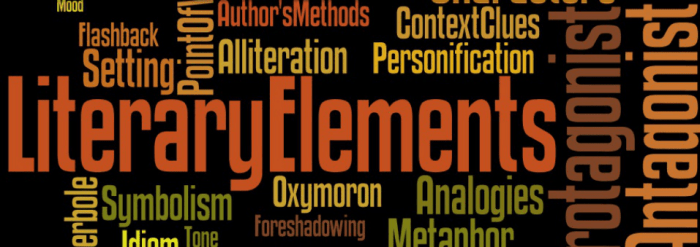La siesta del martes recursos literarios – In the realm of literary analysis, “La Siesta del Martes” stands as a captivating narrative that invites readers to delve into its intricate tapestry of literary devices and symbolic undertones. This profound work showcases the author’s mastery of storytelling, employing a non-linear structure, diverse perspectives, and a rich array of figurative language to convey profound themes and evoke evocative imagery.
Through the lens of this exceptional narrative, we embark on a journey to unravel the intricate web of metaphors, similes, personification, and hyperbole that permeate the text. We will delve into the significance of the siesta as a potent symbol, exploring its multifaceted meanings and how it shapes the narrative’s overall trajectory.
Literary Devices in “La Siesta del Martes”

“La Siesta del Martes” by Gabriel García Márquez is a masterfully crafted short story that employs a rich tapestry of literary devices to create a profound and evocative narrative.
Metaphors and Similes
García Márquez uses metaphors and similes to create vivid and evocative imagery. For instance, the narrator describes the siesta as “a river of dreams” (p. 1), suggesting the fluidity and subconscious nature of the protagonist’s experience. Similarly, the protagonist’s memories are likened to “dry leaves” (p.
3), conveying their fragility and ephemerality.
Personification and Hyperbole
The story also employs personification to imbue inanimate objects with human qualities. The garden, for example, is described as “a place where the trees were whispering” (p. 2), suggesting a sense of mystery and intrigue. Additionally, García Márquez uses hyperbole to emphasize the intensity of the protagonist’s emotions, such as when the narrator states that “the heat was so intense that it seemed to boil the blood” (p.
4).
Symbolism of the Siesta
The siesta itself is a powerful symbol in the story, representing both the protagonist’s escape from reality and the transformative power of dreams. The siesta provides a liminal space where the protagonist can confront his past and search for meaning in his life.
Narrative Structure and Techniques: La Siesta Del Martes Recursos Literarios

The narrative structure of “La Siesta del Martes” is non-linear, with the story unfolding through a series of flashbacks and flashforwards. This fragmented structure reflects the protagonist’s fragmented memories and the difficulty he faces in piecing together his past.
Non-Linear Narrative Structure
The story begins in the present, with the protagonist waking from a siesta. From there, it jumps back and forth in time, exploring different moments in the protagonist’s life. This non-linear structure creates a sense of disorientation and mystery, drawing the reader into the protagonist’s subjective experience.
Flashbacks and Flashforwards
García Márquez uses flashbacks to explore the protagonist’s past and provide context for his present actions. These flashbacks often occur during the siesta, when the protagonist’s subconscious mind is more active. Flashforwards, on the other hand, provide glimpses into the protagonist’s future, creating a sense of anticipation and uncertainty.
Different Perspectives
The story is told from multiple perspectives, including the protagonist, his wife, and his mother. These different perspectives provide a multifaceted view of the protagonist’s life and relationships, adding depth and complexity to the narrative.
Characterization and Relationships

The characters in “La Siesta del Martes” are complex and well-developed, with their own motivations and desires.
Main Characters
The protagonist, whose name is never revealed, is a middle-aged man struggling with his identity and the loss of his father. His wife, also unnamed, is a supportive and understanding presence in his life. The protagonist’s mother is a distant figure who represents the past and the protagonist’s childhood.
Relationships
The relationships between the characters are complex and often strained. The protagonist’s relationship with his father is marked by unresolved conflict, while his relationship with his wife is characterized by love and compassion. The protagonist’s mother is a distant figure who haunts his memories.
Unnamed Narrator
The unnamed narrator is a mysterious figure who observes the protagonist’s life from a distance. The narrator’s role is ambiguous, and it is unclear whether they are a real person or a figment of the protagonist’s imagination.
Themes and Symbolism
“La Siesta del Martes” explores a range of themes, including memory, loss, and identity.
Major Themes
Memory is a central theme in the story. The protagonist’s memories are fragmented and unreliable, and he struggles to make sense of his past. Loss is another major theme, as the protagonist mourns the death of his father and the loss of his childhood innocence.
Identity is also a key theme, as the protagonist grapples with who he is and what his place in the world is.
Symbols
García Márquez uses a number of symbols to convey the story’s themes. The siesta is a symbol of both escape and transformation. The garden is a symbol of childhood and innocence. The river is a symbol of time and the passage of life.
Themes and Symbols
The themes and symbols in “La Siesta del Martes” are closely intertwined. The siesta, for example, represents both the protagonist’s escape from reality and his search for meaning in his life. The garden represents both the protagonist’s childhood and the loss of innocence.
The river represents both the passage of time and the protagonist’s journey towards self-discovery.
Question Bank
What is the significance of the siesta in the story?
The siesta serves as a central symbol, representing both a physical and metaphorical state of rest and introspection. It provides a pause in the narrative, allowing characters and readers alike to reflect on past events and their implications.
How does the non-linear narrative structure contribute to the story’s impact?
The non-linear structure allows the author to weave together different timelines and perspectives, creating a complex and multifaceted narrative. It challenges readers to piece together the events and relationships, enhancing their engagement and deepening their understanding of the characters and themes.